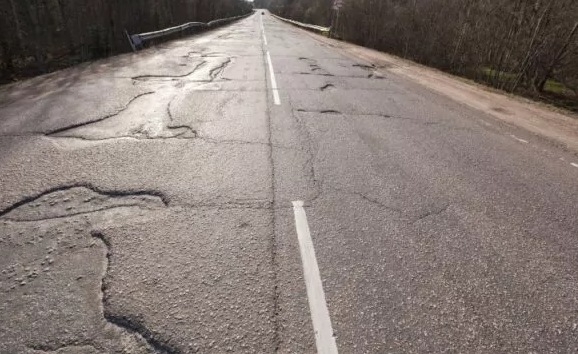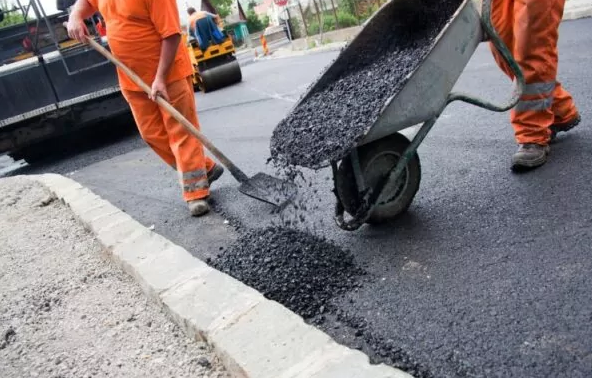Asphalt is a durable and versatile paving material widely used in commercial environments for parking lots, driveways, and roads. However, despite its resilience, asphalt surfaces are prone to various forms of damage over time. Understanding different repair techniques and knowing when to apply them can significantly extend the lifespan of asphalt pavement. Below is a comprehensive guide to common asphalt repair techniques and when commercial enterprises should consider them.

1. Crack Filling and Sealing
Cracks in asphalt surfaces can result from water infiltration, thermal expansion, contraction, or overloading. Left untreated, these cracks can lead to severe pavement deterioration.
Technique
Crack filling involves placing hot or cold filler into cracks to prevent water and debris from entering. Sealing, on the other hand, applies a sealant over the crack.
When to Use Crack Filling and Sealing
- Early Crack Detection: As soon as hairline cracks (less than 1/4 inch wide) appear, crack filling can prevent them from expanding and causing more significant damage.
- Seasonal Maintenance: Before colder weather begins, sealing cracks can help prevent water from freezing and expanding within the pavement, which leads to more severe cracking and potholes.
- Post-Winter Inspection: After winter, new or enlarged cracks are often revealed due to seasonal stress. Repairing these cracks in spring prevents further damage during the hot summer months when asphalt is more pliable.
- Pre-Surface Treatments: Before applying sealers or overlays, filling or sealing cracks ensures a uniform surface that supports the new treatment and enhances its durability.
- Low-Traffic Areas: In areas with lower vehicular traffic, crack sealing may suffice to maintain surface integrity without needing intensive repairs required in high-traffic zones.
- Preventive Maintenance: As part of a regular pavement maintenance program, cracks should be filled and sealed as soon as they are visible to maintain the pavement’s aesthetic and structural integrity.
2. Asphalt Patching

Patching is used to address localized problems, involving the removal of severely damaged pavement sections.
Asphalt Patching Techniques
There are two primary methods: remove and replace and surface patching. Remove and replace involves cutting out the damaged area, cleaning it, and filling it with new asphalt, offering a permanent solution. Surface patching, less durable than full-depth repair, adds a new asphalt layer over the damaged area.
When to Use Asphalt Patches
- Potholes: The ideal solution for potholes—circular or oval holes penetrating the surface and reaching the base layer. Potholes are particularly hazardous for vehicles and pedestrians, necessitating timely repairs.
- Severe Cracks: Large interconnected cracks, often called alligator cracks due to their resemblance to alligator skin, indicate significant structural failure. Repairing these areas prevents further damage and restores pavement integrity.
- Utility Cuts: After underground utility repairs (e.g., water or sewer line fixes), excavated pavement sections need repair to restore surface continuity and structural stability.
- Surface Wear: Extensive wear, such as ruts or depressions, benefits from patching to ensure a level and durable surface.
- Water Damage: Areas weakened by standing water that causes surface breakage or sinking can be corrected with patches, often improving drainage as well.
3. Overlay
When asphalt pavement shows widespread surface wear but the base layer remains structurally sound, an overlay is often a cost-effective repair method.
Technique
This involves applying a new asphalt layer over the existing pavement. Before adding the overlay, significant cracks or potholes must be repaired to prevent recurring issues on the new surface.
When to Use Overlays
- Moderate to Severe Surface Aging: When signs of aging, such as crumbling (loss of aggregates), extensive surface cracking, and roughness, are evident, overlays restore smoothness and performance.
- Large Areas of Fading and Discoloration: UV rays, weather, and traffic cause asphalt to fade and lose its dark, sharp appearance over time. An overlay can renew the pavement’s appearance.
- Minor Structural Deterioration: For pavements with minor structural problems, such as surface-level alligator cracks, overlays reinforce the surface and prevent major damage.
- Thickness Restoration: Over time, traffic loads may wear down the pavement. Overlays restore the pavement’s original thickness, improving its load-bearing capacity.
- Pre-Seal Layer Preparation: Before applying a seal coat for additional protection against water and oxidation, overlays ensure the underlying pavement is smooth and defect-free, enhancing the sealant’s effectiveness and longevity.
4. Milling and Resurfacing
Milling involves removing the asphalt’s top layer before applying a new layer, effectively restoring the pavement to a like-new condition.
Technique
Milling machines grind down the damaged asphalt layer, which is then recycled. After milling, a new asphalt layer is applied.
When to Use Milling and Resurfacing
- Deep Surface Damage: This occurs when the pavement has extensive damage, including large cracks, potholes, and surface deformations that impact driving quality but don’t affect the base layer.
- Ruts and Depressions: Pavement that has formed ruts or depressions from heavy traffic or poor initial construction can be corrected through milling and resurfacing.
- Thickness Adjustment: If the pavement surface has become too high relative to curbs, manhole covers, or drainage lines, milling adjusts the elevation, followed by resurfacing to apply the proper pavement thickness.
- Preventive Maintenance: For aging pavements showing surface oxidation and minor cracks, milling and resurfacing remove the worn layer and apply a durable, new top layer, extending pavement lifespan.
- Surface Renewal: In cases where pavement is significantly worn and discolored, affecting aesthetics and safety (e.g., reduced skid resistance), milling and resurfacing restore a high-quality, safe driving surface.
- Surface Improvement: When specific modifications, such as improved skid resistance, reduced surface noise, or compliance with new safety standards, are required, milling and resurfacing provide an upgraded pavement.
5. Full-Depth Reclamation (FDR)
Full-depth reclamation is essential for severely damaged asphalt pavements where the base layer is also compromised.
Technique
This process involves pulverizing the existing asphalt layer along with a portion of the underlying base layer, mixing it, and reapplying it as a new base layer. This is usually followed by adding new asphalt on top.
When to Use Full-Depth Reclamation
- Severe Pavement Deterioration: Suitable for pavements with extensive structural failures, including deep cracks, large potholes, and significant base or sub-base instability.
- Compromised Base Layer: When base or sub-base materials have deteriorated due to moisture infiltration, poor initial construction, or overloading. FDR rebuilds these layers with a more durable foundation.
- Cost-Effective Reconstruction: FDR can be more economical than traditional excavation and replacement methods since it recycles much of the existing material.
- Increased Load-Bearing Capacity: For pavements that need upgrades to handle heavier traffic or higher loads, FDR strengthens the pavement system’s structure.
- Environmental Sustainability: FDR reduces the need for new materials by recycling existing pavement and base materials, significantly reducing the carbon footprint of pavement reconstruction.
- Subgrade Problems: When the subgrade becomes unstable or inadequate, FDR addresses these issues by mixing stabilizing agents (e.g., cement, lime, or asphalt emulsion) directly into the reclaimed base material.
Why Should Commercial Enterprises Consider Asphalt Pavement Repairs?
- Cost-Effectiveness: Regular maintenance and timely repairs prevent the high costs associated with complete pavement replacement or extensive repairs.
- Safety: Maintaining asphalt surfaces’ integrity prevents accidents, reduces liability risks, and leaves a positive impression on customers.
- Longevity: Well-maintained asphalt lasts much longer, making it a smart long-term investment.
- Aesthetics: Properly maintained asphalt enhances the appearance of commercial properties.
- Sustainability: Regular maintenance, especially through methods like milling and full-depth reclamation, supports sustainable practices by minimizing waste and recycling materials. Sustainability is increasingly important to consumers and regulatory bodies.
